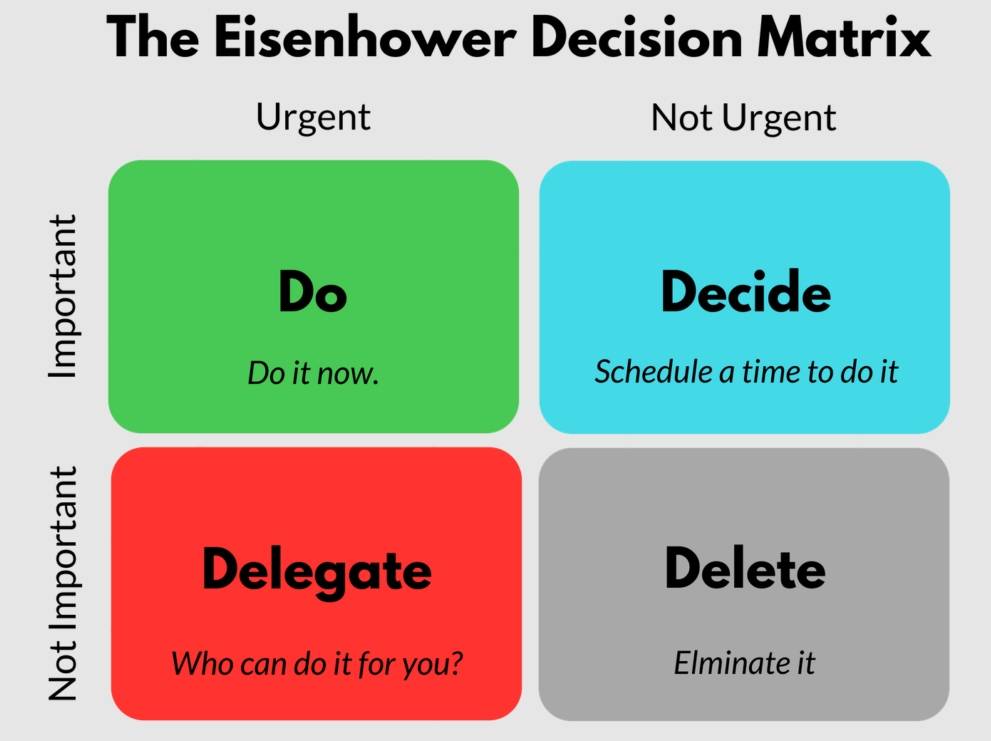In order to achieve global and daily goals, it is important to plan your time competently and distribute tasks correctly. Let’s find out how to do it as effectively as possible without getting lost in routine and without being afraid of hard work.
Scheduling is a method of effectively allocating time for the quality performance of various tasks.
It often happens that things and deadlines pile up like a snowball, and time and energy remain less and less. As a result, we either get burned-out deadlines, or a nervous breakdown, or all of these at once. There are tools such as time management, goal setting and planning to avoid deplorable work results. These “three pillars” of efficiency have a lot in common, but still differ. You can read more about time management, for example, in various books.
Planning is a more global method of allocating time and prioritizing tasks, as it applies not only in personal life, but also in business. In the latter case, planning is especially necessary, because the result of production depends on the proper allocation of tasks and resources. In general, business planning is one of the methods of effective allocation of time, actions, resources and funds.
Basic types of planning
Because the method of planning has a wide range of applications, a different type is appropriate for each area of life.
Necessary planning
This type in turn is divided into:
- Directive, in which the fulfillment of tasks is mandatory. It implies detail and the person to whom the finished plan is sent. More often used in the state planning or in the enterprise.
- Indicative, which does not imply the obligatory execution of deadlines and tasks. It is more recommendatory and is applied in microeconomic processes.
- By time of task execution
What matters here is the time frame within which the plan is built.
Short-term planning – is calculated for a period of up to a year.
It can contain a plan for a day, a week, a month, a quarter. The most common type, since it is used in everyday life and in the enterprise.
Medium-term planning – used in government agencies, enterprises and firms.
Usually calculated for a period of one to five years.
Long-term planning – here the calculation is for a period of five years or more.
Often used in science and economics to solve strategic problems.
According to the content of the plan.
This includes tactical, strategic and process planning.
- Strategy is a long-term plan that defines the main vector of the firm’s actions. This includes the study of the market, the target audience, optimization of the work process, and so on.
- Tactics is the planning that creates the conditions for solving the tasks set in the strategic planning.
- Calendar planning – involves the allocation of strategic and tactical steps to specific dates and other indicators.
- Business planning – as one of the types, is necessary to assess the effectiveness of the planned activities. This is a detailed plan, which includes all the main indicators of the organization and business.
Simple planning tips
- Decide on a method
The types described above are not suitable for everyone, so it is worth considering the characteristics of your body and rhythm of life, as well as your level of diligence and concentration on the task. - Make planning a habit
Regardless of the method, try to make the process a habit. This helps to streamline not only daily life, but also the process of achieving global goals. Also, planning develops strategic thinking and foresight. - Formulate goals clearly.
A common mistake is building vague plans. To learn French, to succeed at work, to travel a lot – all of these belong more to desires, while the goals need to be specified in as much detail as possible. “Sign up for French courses next month,” “plan a trip to country N next year,” “develop a product promotion strategy,” and so on.
Top most popular planning methods
Eisenhower Matrix
A method of prioritization invented by Dwight Eisenhower, the 34th president of the United States.
The method is based on the distribution of cases into four categories:

- Important and urgent – to do.
This includes tasks that need to be done as soon as possible. For example, to pass a project on which the company’s further actions depend, or a term paper whose deadline will burn out in a week. - Important and Not Urgent – this category is more about self-development, which is necessary for personal growth.
Studying foreign languages, doing sports, reading useful literature – everything that does not have a clear deadline, but is very important for a person. - Not important and urgent – here we are talking about daily, routine tasks that are mostly of a domestic nature.
Cooking, laundry, cleaning, and daily mailings can all be delegated to free up time for more important and urgent tasks. - Not important and not urgent – at first glance, it seems that this category is basically unnecessary.
However, here we are talking about leisure time, which in turn also needs planning, because often free time can be severely limited, and lists of movies, books and songs need not only replenish but also implement.
The Pareto Method
Or the “80/20 rule.” The essence of the principle formulated by the Italian sociologist and economist Vilfredo Pareto is that 20% of efforts bring 80% of the result and, accordingly, 80% of efforts are spent on 20% of the result. It all depends on how effective this or that action is in achieving the goal.
This method works especially well in everyday life. If you correctly allocate your time to 20% of the necessary tasks, it will bring you 80% closer to your goal. The Pareto method is best used in combination with the Eisenhower matrix, starting the day with important and urgent tasks and moving gradually to less important but more voluminous tasks.
OKR method
OKR stands for Objectives and Key Results. This methodology is more related to business planning. It is based on the effective control of tasks in the implementation of company goals. In addition, the methodology implies project management to synchronize individual and team goals. It was developed at Intel in the 1960s. Now the system is used in companies such as Google, Spotify, Twitter, LinkedIn, Airbnb and others.
John Doerr, a well-known venture capitalist and partner at Kleiner Perkins, who was behind the introduction of OKR at Google, suggested the following formula for setting goals: “I will achieve /_________________/ , which can be evaluated with /_______________________/ “, where you need to write the goal and the key results. As Felipe Castro writes in The Beginners Guide to OKR, the latter should be quantitative and measurable.
Fix-Time Techniques.
These include techniques in which the work goes on a timer. One of the most common is the Pomodoro method, invented in the 1980s by Cirillo Consulting owner (and then student) Francesco Cirillo. The essence of the method is that you work for 30 minutes, after which you take a five-minute break. After four such working approaches, followed by a “big break” of 30 minutes.
